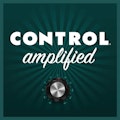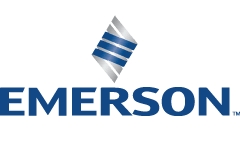Asset-specific insights to transform service workflows
The digital transformation of industry doesn't only apply to the real time control and optimization of industrial processes. It also applies the documentation, the supply chains, and context-specific workflows that support industrial assets across their entire lifespan. To better understand how, when it comes to industrial automation, digital technology at our disposal can make online retailers estimated delivery times a little more than entry stakes, Keith Larson is joined by Brian Fretschel, director of digital customer experience for Emerson.
Transcript
I'm Keith Larson, publisher of Control magazine and ControlGlobal.com, and I'm excited to report that this week, we're coming to you live, on location from Emerson Exchange 2022 at the Gaylord Texan resort in Grapevine, Texas. This week's Solution Spotlight edition of our Control Amplified podcast is sponsored by Emerson. And to better understand how, when it comes to industrial automation, digital technology at our disposal can make online retailers estimated delivery times a little more than entry stakes, I'm joined by Brian Fetcham, director of digital customer experience for Emerson.
Welcome, Brian and real pleasure to have you here today.
Brian Fretschel: Yeah, thanks for having me, Keith. Great to be here with you in person.
Larson: Yeah, it's awesome. I love it. I understand, it's almost record breaking attendance?
Fretschel: Yeah, yeah.
Larson: 3000?
Fretschel: Yes.
Larson: Great. Congratulations on a super event. Well, to start things off, perhaps you can kind of point our listeners with the broader MyEmerson platform for those who may not familiar, and it's really early focus on digitalizing and streamlining, more upfront engineering and specification processes in buying the company's instrumentation product.
Fretschel: Yeah, yeah, yeah. So, MyEmerson is the personalized access point to Emerson.com. So, that is your kind of token or key to getting into all the functionality underneath MyEmerson. And with MyEmerson, as you noted, there's a lot of work been done over the last couple of years around engineering tools, or sizing and configuration platforms, storing sizings, things like that, certainly quote and order history, the ability to reorder, validate prices, check lead times, things like that, you know, more recently, a lot of focus around MyAssets, which we'll get into and talk further about MySoftware where we keep an update, maintain our software licenses and things like that, as well as MyTraining, which is, you know, really new, new functionality around accessing personalized training plans and things like that. So, yeah, that's kind of a holistic experience across Emerson.com.
Larson: I know you've been focusing, as you just mentioned, on the MyAssets build out of the platform. The effort is really taken on a more real-time, device-specific focus. Can you talk more a little bit about the MyAssets offering and what it means for Emerson's users?
Fretschel: Yeah, yeah, MyAssets is a comprehensive record of all of the Emerson instruments at a particular customer site. It contains access to historical information, device timelines, technical documents, certificates, upgrade spares, things like that. So, it's really more of your installation and operation of a particular asset. Because of that, not only is it good for troubleshooting, we've heard lots of really good stories this week, from folks about how good my assets has been at helping them troubleshoot faster, keep processes up longer, it really is, in aggregate, when you look at that data, take it on a little bit more of a maintenance planning type of a look. So, being able to do obsolescence planning plan for your next turnaround or outage. So, we see the kind of the balance in MyAssets of those two different use cases.
Larson: So, I mentioned it's kind of nice to be able to pull up some documentation on your smartphone while you're out in the field rather than slogging it all the way back to the to the maintenance shop.
Fretschel: Yeah, reducing manual trips back and forth is really kind of the name of the game. So, being able to look up a particular instrument, find troubleshooting manuals, guides, finding us in the factory, if we need to help with any of that, or being able to reorder anything in particular, that's really been a been a huge help for customers.
Larson: It seems that with the pandemic, QR codes that were kind of out of style came roaring back in contexts ranging from restaurants to everything else. And I understand you've actually shipped millions of devices with unique device-specific QR codes already. What further functionalities do these codes enable when it comes to the device's lifecycle?
Fretschel: Yeah, yeah, great question. And you're absolutely right. I think COVID kind of retrained us on what a QR code does. We're talking about all the menus and fun things that we had to learn during COVID. But yeah, and I think mobile technology as well as come a long way. It's made it a lot easier to scan a QR code and put that really in people's fingertips. I think with the QR code, what's really interesting is the level of support, troubleshooting, training you can get while you're at the device. So, being able to scan it be able to watch a video quick on how to do something with a particular instrument. Summon some support is another one, you know, or requesting, trying to get people on the phone or virtually to be able to visually verify what's going on with the device. I think the whole watermark of troubleshooting and support while at the device has really, really been unlocked with the QR code, which is really exciting.
Larson: I imagine you can also start to combine, you know, you see what I see kind of methodologies with access to the MyAssets.
Fretschel: Yeah, you get a much clearer picture of what's going on how its installed, you know, what might be around it and ambient conditions and stuff like that. So, it really helps from a troubleshooting perspective, definitely.
Larson: I know MyAssets first efforts have really been focused more on the instrumentation and other hardware field devices. I can't help but think how important it would be for making sure software applications are managed, which is probably a trickier thing than maybe visualizing a pressure transmitter. How was that handled now? And how does the company's vision of boundless automation that we heard about this week impact delivery of that value proposition?
Fretschel: Yeah, great question. I think, you know, today, the act of retrieving a download is pretty straightforward. You go to a website, you apply a few filters, you find the file you're looking for you grab it and go. I think in this world of bonus automation, and all this interconnected data, especially through MyAssets, we're starting to find those use cases of proactively notifying people when there's new revisions or new management, software that needs to be applied. Thinking a lot about entitlement management and license management, and how does all that get controlled and stored and managed, that's all that's all through MyAssets, and MyTraining and MySoftware. So, I think a lot of that is really evolving quickly. It'd be the ability to see the current firmware on a device and be able to quickly access the next firmware upgrade that used to be a lot of emailing back and forth searching around on websites. So, that's been a lot more streamlined now with MySoftware, MyAssets, kind of working in tandem to be able to deliver that for customers.
Larson: So, it's really delivering that vision of the the integrated field seamlessly up into the cloud, which is where it's actually a perfect example of that coming to fruition, and a lot of it.
Fretschel: Yeah, and definitely being able to get support along the way if that upgrade process doesn't go well, if we want others to do it for us, you know, being able to have that and all that interconnected data, I think is really important for us.
Larson: Are there other things your your customers are asking for? What's the next high priority for you? I know you've got a whole diagram of all this stuff you want to flesh out for MyEmerson, are there urgent needs coming down the pipe?
Fretschel: I think kind of the next steps, you know, around some of this is actually enabling that procurement workflow coming out of this information. So, we talked a little bit about spares or service or reordering trying to connect the asset data information to the procurement organizations to try to streamline the procurement process after the troubleshooting. I think that's another area that we'll continue to look to explore. And obviously, MyTraining is new, and we're continuing to add to that platform to be able to bring more troubleshooting and support tactics to the to the experience. So, those are the areas to watch for.
Larson: For those of our listeners who really want to find out more about MyEmerson, where should they go to find out more or sign up to experiment with the platform?
Fretschel: Yeah, great question. You know, Emerson.com has got quite a bit of content out there for how to use MyEmerson and kind of take advantage of all the all the great functionality, for sure there's a ability to create an account sign in up in the upper right part of the part of the website. So, that'd be that'd be the place that I would point users to.
Larson: Once they get to the homepage, it's going to be pretty clear where to go from there.
Fretschel: Right. Right. Right. Right.
Larson: Well, great. Well, thanks so much, Brian, for sharing your perspectives with us today. It's been thought provoking and a real pleasure as always, and congrats on a great Emerson Exchange this week as well. Thanks also to Emerson, for sponsoring this episode. And all you people who are online, thank you for tuning in.
I'm Keith Larson, and you've been listening to a Control Amplified podcast. If you've enjoyed this episode, you can subscribe wherever you find your podcasts. Plus, you can find a full archive of past episodes at controlglobal.com
Thanks again, Brian. Really appreciate you joining.
Fretschel: Yeah, thanks, Keith.
Larson: Signing off for now.
For more, tune into Control Amplified: The Process Automation Podcast.
About the Author

Control Amplified
The process automation podcast
The Control Amplified Podcast offers in-depth interviews and discussions with industry experts about important topics in the process control and automation field, and goes beyond Control's print and online coverage to explore underlying issues affecting users, system integrators, suppliers and others in these industries.

Leaders relevant to this article:
